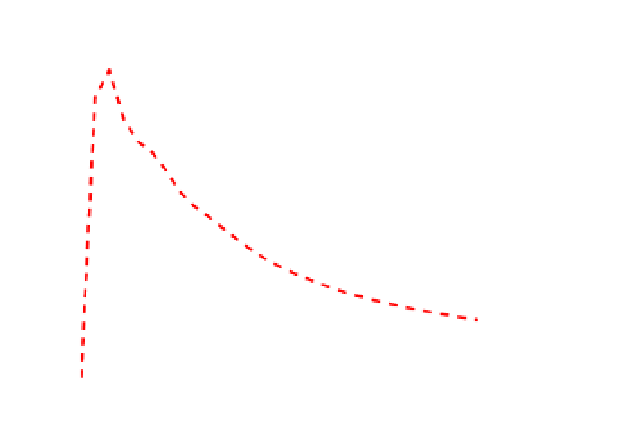Global Positioning System Reference
In-Depth Information
where AME
is the mean of the absolute multipath error for the successive path delay
x
ct
.
Now, the running average error for each particular delay in the range [0;1.167] chips can be
computed as follows:
(
x
ct
)
i
i
=
1
AME
(
x
ct
)
i
(8)
(
)=
RAE
x
ct
,
where
i
is the successive path delay index, and RAE
(
x
ct
)
is the RAE for the successive path
delay
x
ct
.
The RAE curves for CBOC(-) modulated Galileo E1C signal (i.e., pilot channel) is shown in Fig.
9. It is obvious from Fig. 9 that the RSSML and PT(Diff2) show the best performance in terms
of RAE as compared to other techniques in this noise-free two to five paths static channel
model. Among other techniques, TK+nEML showed very good performance followed by
SBME, HRC and nEML. The SBME coefficient and the late slope at very late spacing of 0.0833
chips were determined according to Bhuiyan, Lohan & Renfors (2010) for a 24.552 MHz
front-end bandwidth (double-sided).
For the above configuration, the SBME coefficient is
−
0.007 and the late slope is
4.5.
It is worth to mention here that the RAE analysis is quite theoretical from two perspectives:
firstly, the delay estimation is a one-shot estimate, and does not really include any tracking
loop in the process; and secondly, the analysis is usually carried out with an ideal noise
free assumption. These facts probably explain the reason why an algorithm which performs
CBOC(−) signal, 2 to 5 paths, BW 2
4.552 MHz
4
nEML
HRC
TK+nEML
PT(Diff2)
SBME
RSSML
3.5
3
2.5
2
1.5
1
0.5
0
0
0.2
0.4
0.6
0.8
1
1.2
1.4
Multipath delay [chips]
Fig. 9. Running average error curves for CBOC(-) modulated Galileo E1C signal.
very well with respect to RAE may not necessarily provide the same performance in a more
realistic closed loop fading channel model, especially in the presence of more than two channel
paths. However, MEE or RAE analysis has been widely used by the research community as
an important tool for analyzing the multipath performance due to simpler implementation,
and also due to the fact that it is hard to isolate multipath from other GNSS error sources in
real life.



























































































































































Search WWH ::

Custom Search